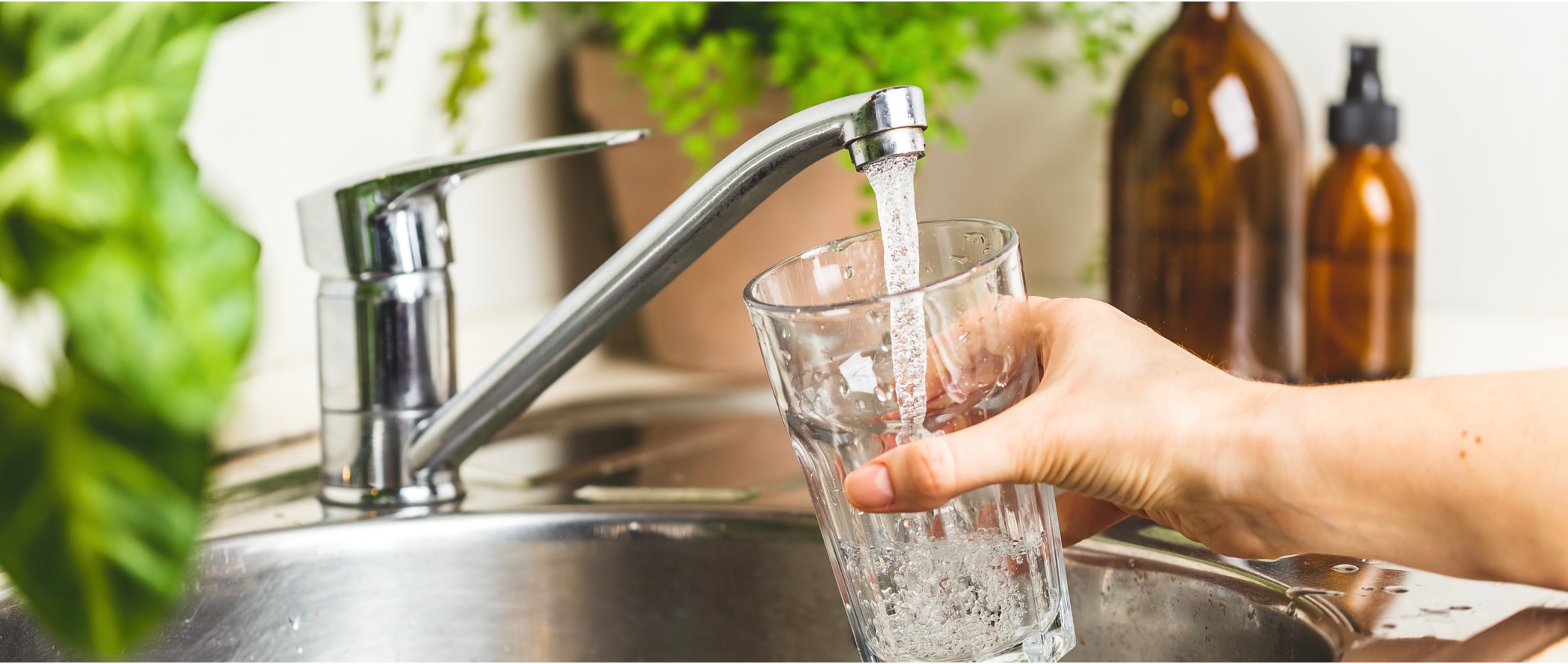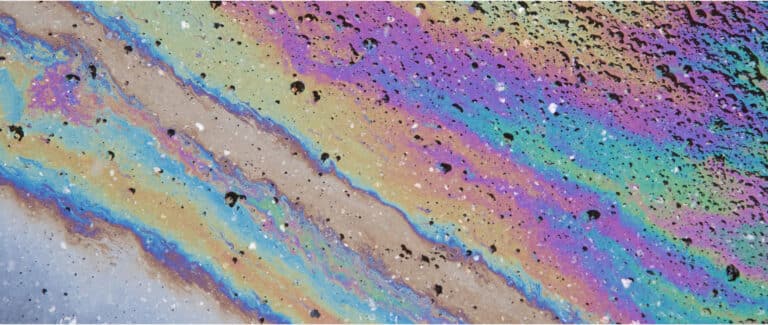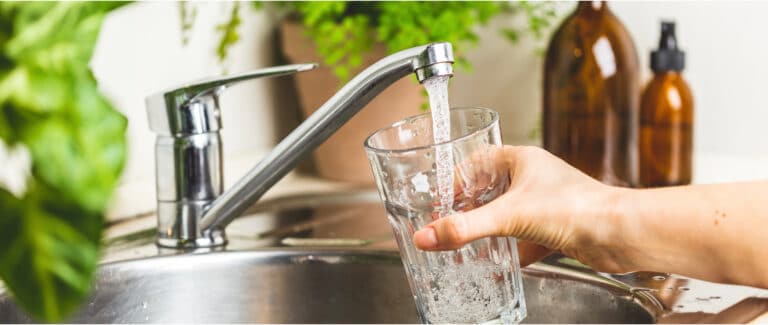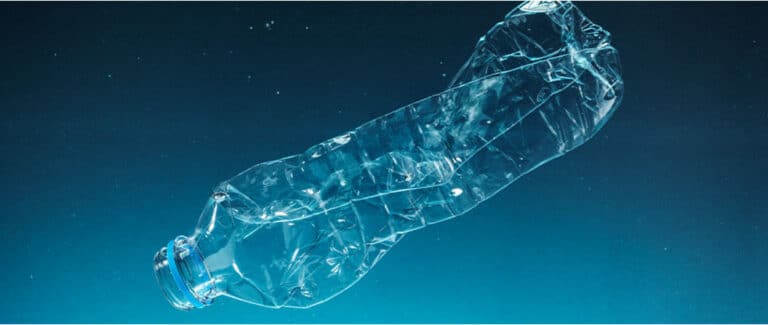Blog / Health / The water that flows from our taps is often distrusted, even though it is highly controlled.

The water that flows from our taps is often distrusted, even though it is highly controlled.
Running water is a controlled drinkable product. It is subject to strict regulations and undergoes daily checks at the pumping stations, during its various physicochemical treatments and when it leaves the water treatment plants.
Measure the quality of your tap water in a few minutes
The quality of tap water varies greatly depending on the area, the state of the distribution network and the sanitary installations. It may be potable, but it can contain elements such as nitrates that are potentially harmful to health, especially for young children, the elderly or people with allergies. Your appliances and pipes are also at risk from water that is too hard or too aggressive. Very hard water corrodes and calcifies pipes and household appliances, reducing their lifespan by several years.
NITRATES
Nitrates NO3- are ions produced during the nitrogen cycle, which is naturally present in the air (about 80% of the air) in the form of nitrogen. Once the nitrogen is assimilated by bacteria and after various natural transformations, nitrite and nitrate ions are formed. Nitrate ions are also produced by the decomposition of organic matter or the combustion of organic matter and fossil fuels.
Originally, nitrates were used primarily for food preservation through the use of saltpeter (sodium nitrate or potassium nitrate). Nowadays, nitrates are mainly used as fertilizers because they are essential for plant growth and therefore for agriculture.
When nitrates are used in abundance, they are found in excess and are washed away by rain. Because they are highly soluble in water, they end up in groundwater tables and rivers that supply drinking water.
Nitrates by themselves are not dangerous to humans. However, nitrates are easily converted into nitrites. These nitrites not only form carcinogenic nitrogen compounds, but are also responsible for blue baby syndrome. An infant’s stomach does not have the acidity of an adult’s stomach, so nitrates are quickly converted to nitrites. These react with hemoglobin to form methomoglobin, which interferes with the blood’s ability to carry vital oxygen to the body’s cells. As a result, the skin turns blue, a sign of oxygen deprivation.
If infants are obvious targets, other populations such as the elderly are also at risk.
In France, the quality limit for water intended for human consumption, except packaged water, is 50 mg/L for nitrates and 0.5 mg/L for nitrites.
NB: Boiling water does not eliminate the risk as nitrates remain in the water.
IRON AND COPPER
Although iron and copper are naturally present in the environment and can therefore be found in drinking water, the presence of these two elements above the legal limits is generally a sign of deterioration of the pipes due to the migration of the metallic ions that make up the distribution network.
Despite the current tendency to use modern materials such as PER, many water distribution networks or domestic pipes are still made of black steel, galvanized steel or copper. Many phenomena related to the composition of the networks, as well as the composition of the water, its aggressiveness, its circulation speed, temperature, etc., can lead to corrosion and/or erosion of these pipes.
The consequences are on several levels:
Migration of metallic ions in the water and contamination of the drinking water
Formation of more or less significant leaks on the pipes
Formation of sludge that can clog pipes and household appliances.
The quality references for water intended for human consumption indicate the following maximum values
Total iron: 200 µg/L
Copper: 1.0 mg/L
Copper is most commonly associated with Wilson’s disease, a genetic disorder characterized by the accumulation of toxic copper in the body, particularly in the liver and brain. Scientific studies also implicate copper as a factor in Alzheimer’s disease.
Iron is linked to hemochromatosis, the most common genetic disease in France, affecting 1 in 300 people. The iron consumed is not eliminated from the body as it should be, but accumulates in all the organs, gradually destroying them and provoking serious attacks (cirrhosis of the liver, cancer, cardiac insufficiency, etc.).
CHLORINE
Although chlorine is well known, it does not exist as such in its natural state. On the other hand, it exists in its gaseous form (Cl2), which itself can give rise to by-products (hypochlorous acid, hypochlorite ions, chloramines…).
Chlorine in its various forms is the most widely used product for the disinfection and conditioning of drinking water. Very easy to use, it allows a disinfection of the whole distribution network, preventing the proliferation of microorganisms over a very long distance. The persistence of chlorine makes this product preferable for its use for prolonged action, since a slight overdose ensures a long disinfecting action.
Final chlorination is therefore one of the essential steps in the production of drinking water.
Although the level of chlorine in water is not regulated, the water must not have an unpleasant smell or taste, nor must it undergo any abnormal changes.
Although chlorine has many advantages in disinfecting drinking water, poor conditions of use can be embarrassing, even dangerous.
For example, if the pH of the water is too high (above 7.7), or if the chlorine dosage is too low, reactions occur that lead to the formation of chloramines.
It is these chloramines that give the water its unpleasant properties:
Bad taste
Bad smell
Very irritating to the mucous membranes
Moreover, these chloramines are also involved in the appearance of many allergies, asthma, but also as a carcinogen.
HARDNESS
Water is made up of many elements, including minerals. The nature of the dissolved minerals and their concentration in the water depends on the composition of the rocks through which the water flows and how easily they dissolve.
Rocks such as gypsum (calcium sulfate) or limestone are soluble rocks that dissolve in contact with water, loading it with calcium and magnesium ions.
The measurement of hardness, i.e. the concentration of calcium and magnesium ions in water, is commonly referred to as TH, or Hydrotimetric Title, and is expressed in French degrees (°F).
The higher the hardness of the water, the more likely it is to form extremely sticky and poorly soluble limescale. This will be all the more true if the parameters related to the water are modified (increase in temperature, circulation speed, etc…).
The problems related to scale are very numerous. For example, according to a survey conducted by the CSA, 83% of hard water consumers say they are dissatisfied with the presence of scale in their tap water.



